“I Use A Net To Catch The Seeds” – Euphorbia Propagation Advice From Darren Evans
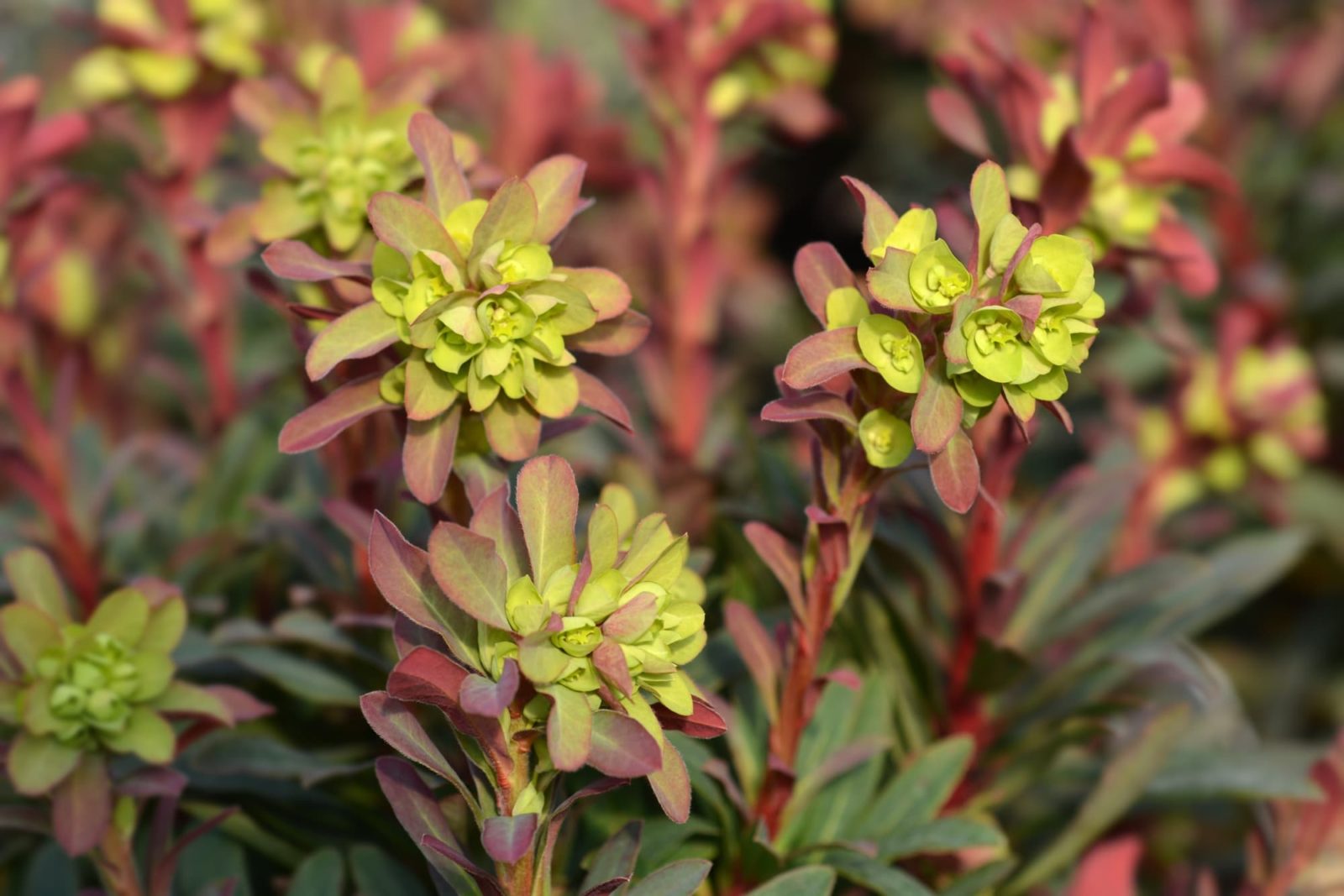
PERENNIALS > EUPHORBIA > PROPAGATION

Elizabeth is a Permaculture Garden Designer, Sustainability Consultant and Professional Writer, working as an advocate for positive change. She graduated from the University of St. Andrews with an MA in English and Philosophy and obtained a Diploma in Applied Permaculture Design from the Permaculture Association.
Reviewed By DAN ORI

Dan has over 27 years’ under his belt caring for plants and gardens. Working as a Horticultural Instructor and Consultant, he draws on a diverse range of experience that includes working as a Head Gardener, Tree Surgeon, Garden Centre Trouble Shooter, and writer of academic papers. Dan has a Level 3 Diploma in Horticulture and is currently a candidate for the RHS’s most prestigious award – The Master of Horticulture.
Contributions From DARREN EVANS

Darren is the Plant Manager at Pugh's Cacti, a wholesale supplier of cactus and succulent plants to garden centres in the UK, based in Worcestershire.
IN THIS GUIDE
Euphorbias are varied plants that like a wide range of conditions and differ greatly in their growth habit and appearance.
Some are great for growing outdoors in gardens in the UK, while others are prized as houseplants or for greenhouse growing.
Euphorbias are propagated in a number of different ways.
They can be:
- Grown from seed.
- Propagated by means of softwood cuttings.
- Propagated by division.
Whichever method you are looking at for the particular type of euphorbia that you want to grow, the job is typically one to undertake in the spring.
| Difficulty | Easy to medium |
| Equipment Required | Euphorbia seeds (sowing), suitable growing medium, gardening gloves, pots, garden fork (dividing) |
| When To Propagate | Spring |
1) Growing Euphorbias From Seed
Species types of Euphorbia can be grown from seed, as Darren Evans from Pugh’s Cacti explains:
“Euphorbias have male and female plants and, once pollinated, produce a seed that explodes to scatter their seeds,” he says.
“In my greenhouse, I use a net to catch the seeds, tying the net around the plant until the seeds appear.”
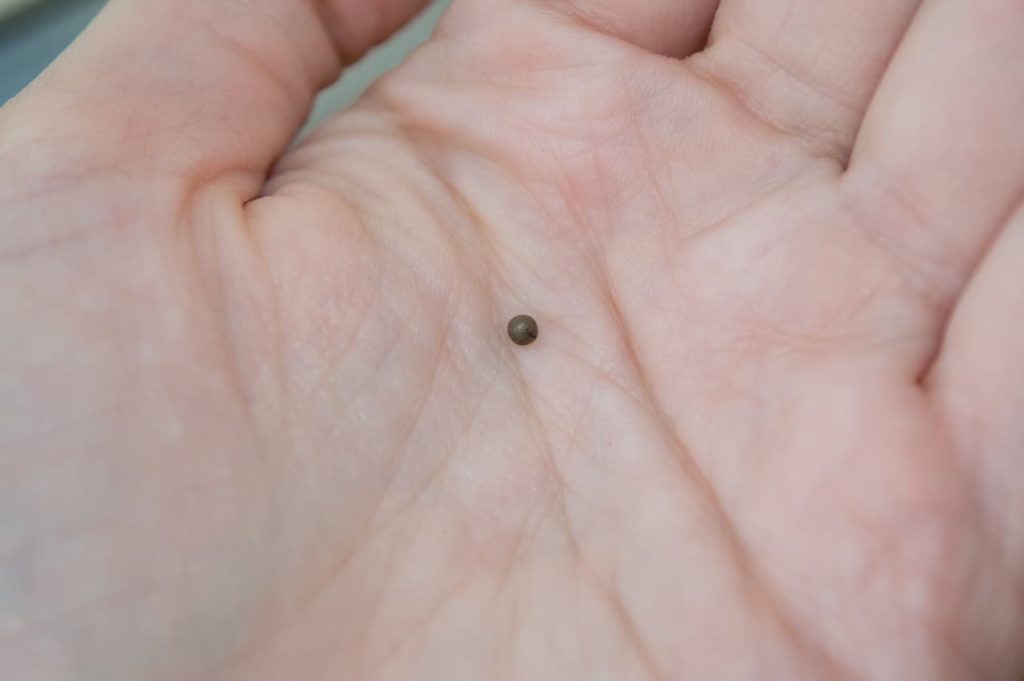
However, it is important to remember that cultivars will not come true to seed.
In other words, the baby plants you grow will not necessarily resemble the parent plant and can differ in their growth habit or colour.
This is typically the method used to grow annual Euphorbias like E. marginata and some other species.
When To Sow
The seeds from many Euphorbias can be collected when the seed capsules turn brown.
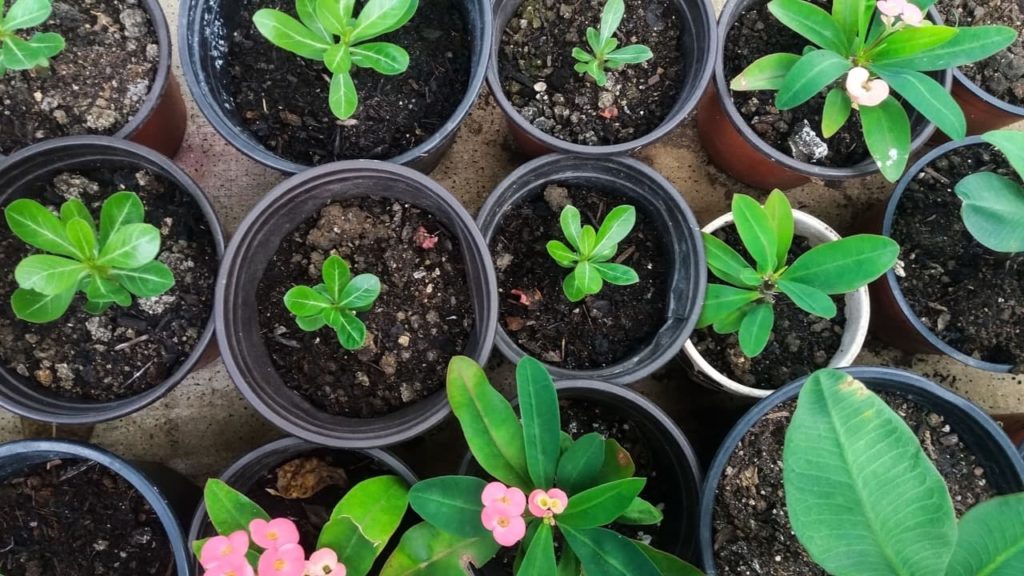
These seeds can then be sown in autumn or in spring.
Sowing Euphorbia Seeds
- Collect or source your euphorbia seeds.
- Prepare a seed tray and your growing medium.
- Soak your euphorbia seeds for a few hours before sowing to improve results.
- Sow seeds on the surface of a seed-starting growing medium and lightly cover them with more of the growing medium.
- Be patient as germination can take several months, especially in cooler conditions.
- Wearing gloves, pot on as needed. Often, plants will then be ready to plant out in a couple of years.
2) Propagating From Softwood Cuttings
Another option with some Euphorbias is to propagate an existing plant by means of softwood cuttings.
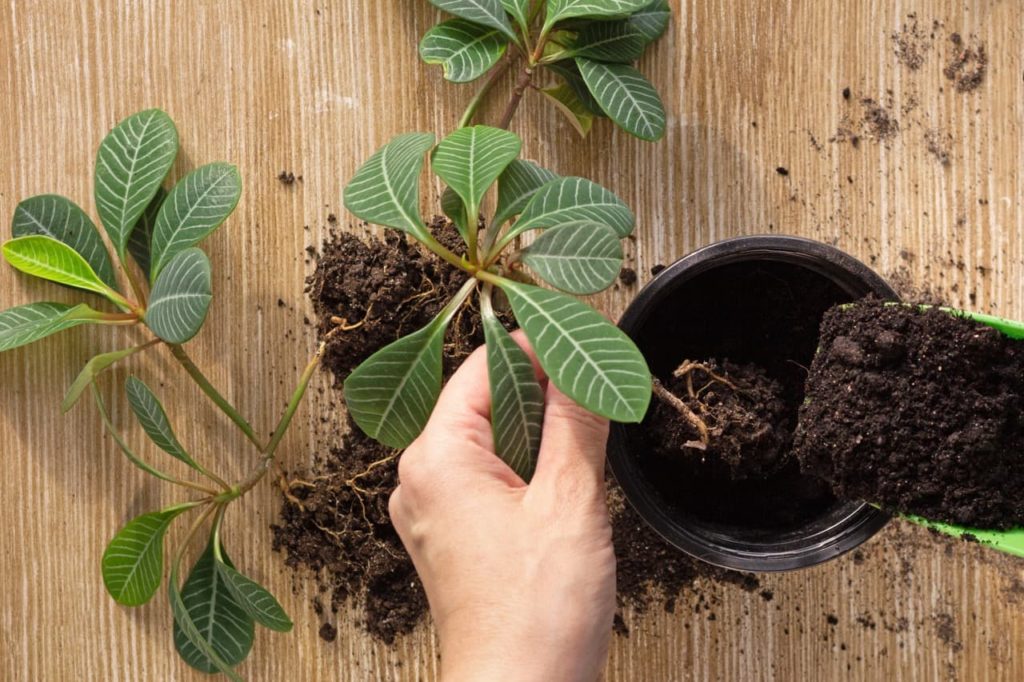
Shrub-like Euphorbias, including those with biennial stems that grow one year before flowering the next, can be propagated by means of softwood cuttings.
Some Euphorbias that are suited to this method of propagation include E. characias and related plants E. mellifera and E. myrsinites.
When To Take Softwood Cuttings
Softwood cuttings from Euphorbias are best taken in the early spring.
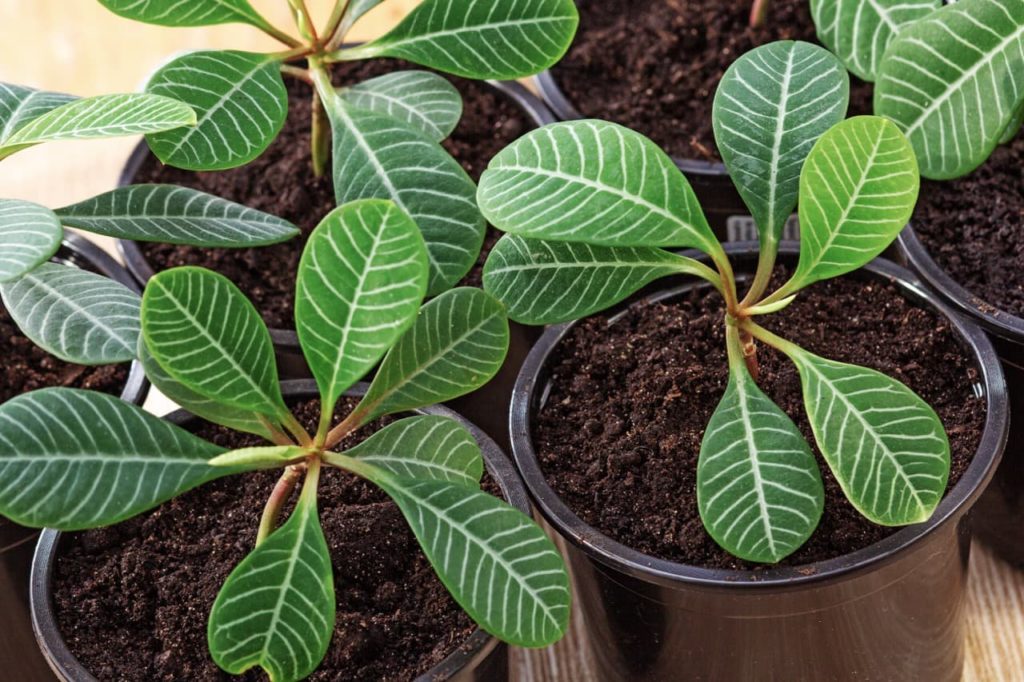
You should select the short shoots that emerge at the base for this purpose.
Growing Euphorbia From Softwood Cuttings
- Select young, pliable green shoots from the base of the plant in early spring.
- Remove 5-10cm of the shoot, cutting the young shoots from the plant just above the ground, as close to the base as possible.
- Pinch out the tip of the softwood cutting with snips.
- Dip the base into a rooting hormone for the best chances of successful rooting.
- Pot up cuttings into containers filled with cuttings compost, watering well but making sure excess water can drain away freely.
- Grow on in a warm location, out of direct sunlight until the roots form well.
- After 2-4 weeks, cuttings should have rooted and be ready to harden off and pot on.
3) Dividing Euphorbias
A final option suitable for the propagation of certain Euphorbias is to lift and divide your plants to obtain more of the same for your garden.
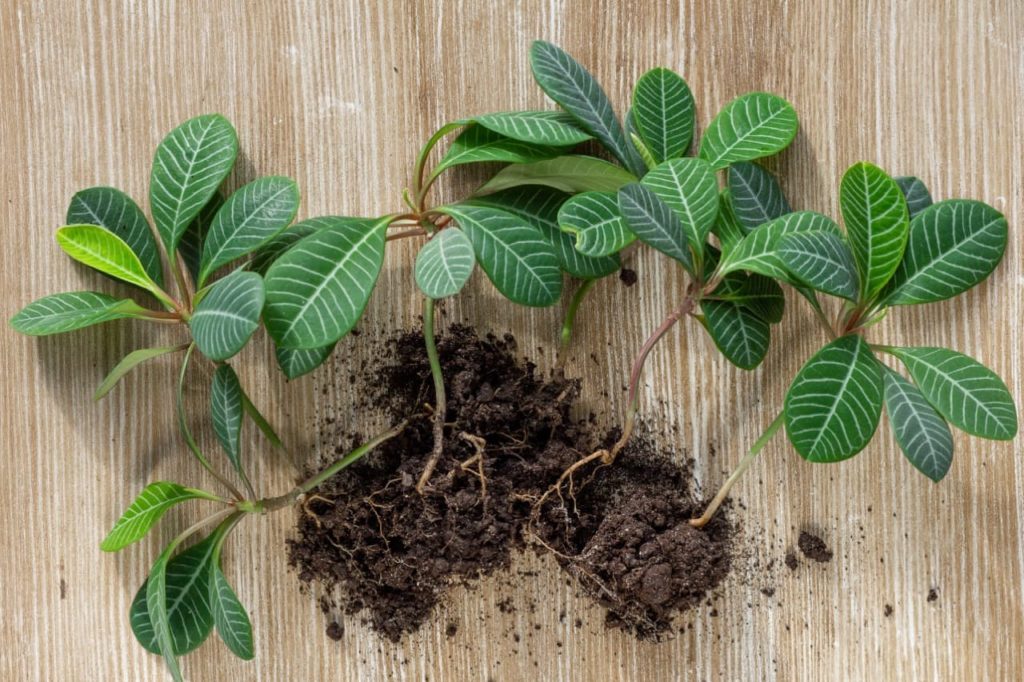
This is by far the easiest way to propagate Euphorbia and it is suited to a large number of these plants.
The euphorbias that are suited to propagating in this way are those that are herbaceous and clump-forming.
When To Divide
The best time to divide most Euphorbia that can be propagated in this way is in the spring, just as the plants come into growth in the early spring, or just after flowering in late spring for the earliest flowering types.
How To Divide Euphorbia
- Lift a mature clump-forming herbaceous Euphorbia from the soil with a garden fork.
- Give the clump a gentle shake to remove clods of soil, so the roots can be seen clearly.
- Ease the plant apart to create several sections of root with a little top growth.
- These sections or divisions can be potted up or planted elsewhere in your garden.
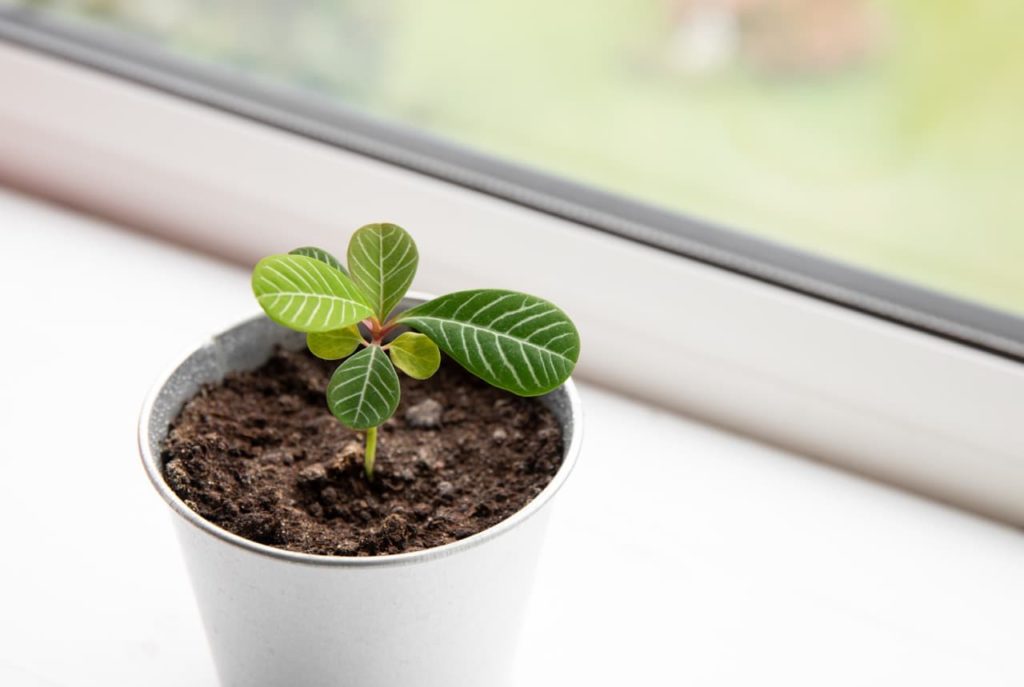
It is important to remember that different methods of propagation are suited to different types of Euphorbia, so it is important to choose a propagation method that is suited to the specific euphorbia that you have chosen to grow.
This is a genus of over 2,000 species of plants – each of which has its own specific growing requirements.1Euphorbia L. (n.d.). Kew Royal Botanic Gardens. Retrieved April 6, 2023, from https://powo.science.kew.org/taxon/urn:lsid:ipni.org:names:327729-2#children
References
- 1Euphorbia L. (n.d.). Kew Royal Botanic Gardens. Retrieved April 6, 2023, from https://powo.science.kew.org/taxon/urn:lsid:ipni.org:names:327729-2#children
